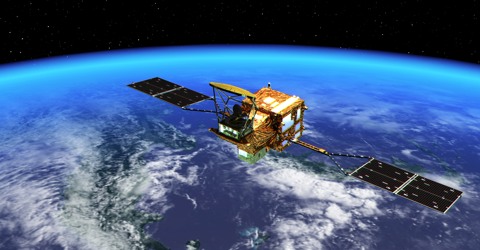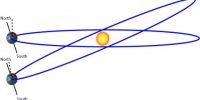Launching of an artificial satellite in the space:
In order to place an artificial satellite in the orbit, necessary very high velocity is provided by multi-stage rocket. The satellite is placed at the nose of the rocket and different instruments and fuels are placed inside the rocket. In order to avoid the resistance of motion of the satellite by air it is placed at a height of a few hundred kilometres (about 930 kilometres). The motion of a rocket is resisted due to the density of air near the earth’s surface. The rocket is initially launched vertically upward so that it can avoid this region. Then by remote control this path of vertical motion is made slowly horizontal to the ground.
This control is made in such a way that after reaching a fixed height the rocket supplies the satellite necessary speed in the horizontal direction. At this stage by placing the satellite in a particular orbit in the space by remote control and by providing speed between 8.05 kms-1 to 11.1 kms-1, it resolves as a satellite like the moon of the earth. After placing the satellite in the fixed height necessary checking is done to see whether there is any instrumental error or mechanical fault exists or not. If everything goes alright then the rocket descends to the ground like a glider.
Uses:
- It is used to establish contacts with other continents through telephones and internet.
- Weather forecast is obtained.
- Used for geo-survey about the size and shape of the earth and other planets.
- To determine the depth of the oceans.
- In radio and video telecast it acts as a relay station.
- To collect information about cosmic rays and other radiations.
- To collect information for spying and for military purpose.
- To transfer and to coiled sports and cultural programs.
- To do research about astronomy.
- To do research on the origin of cosmic rays and other radiations.
Different equipments are kept in different portions of the satellite e.g. source of electric power in some part, communication dish in one part, camera in another part.
















